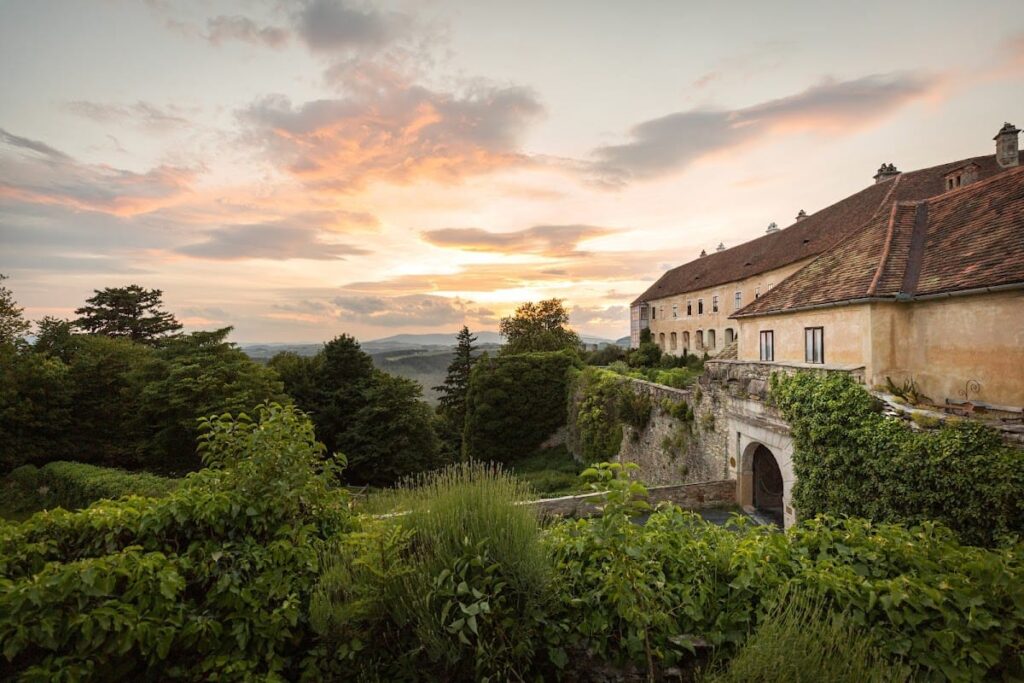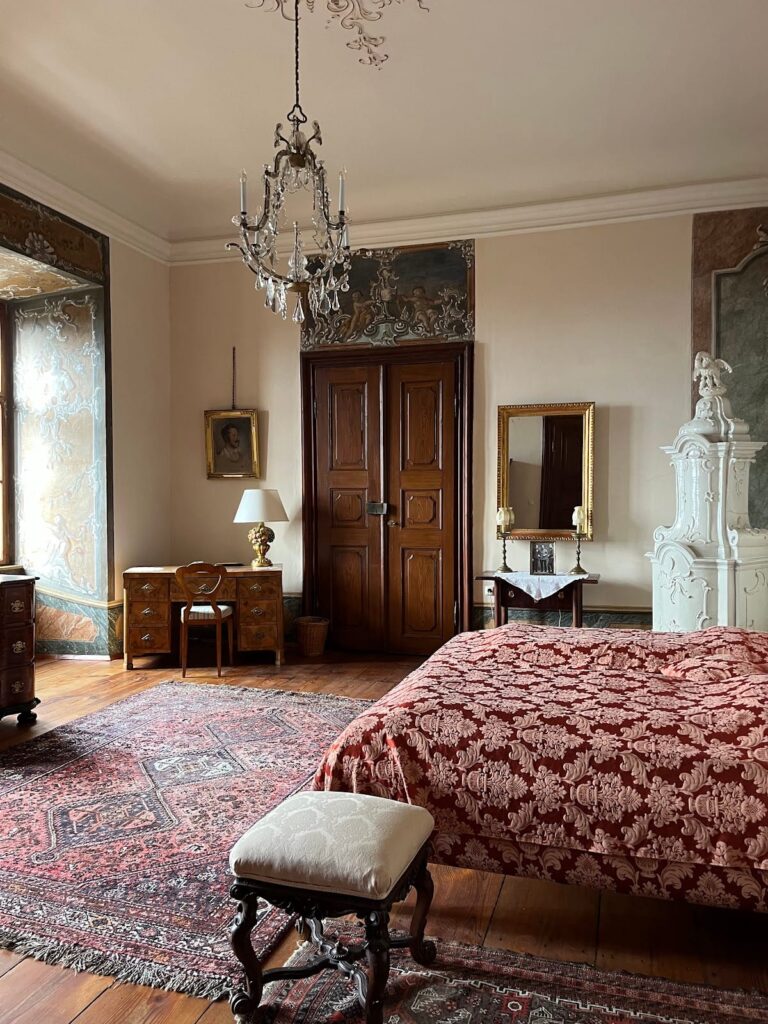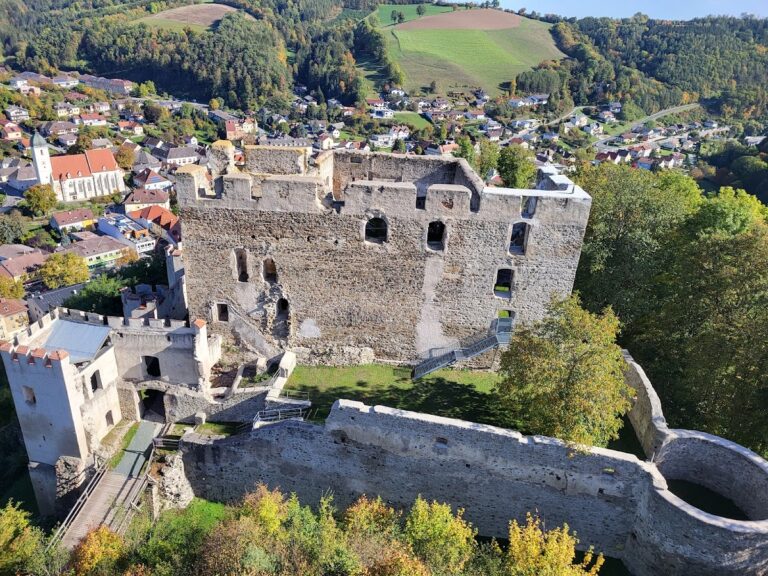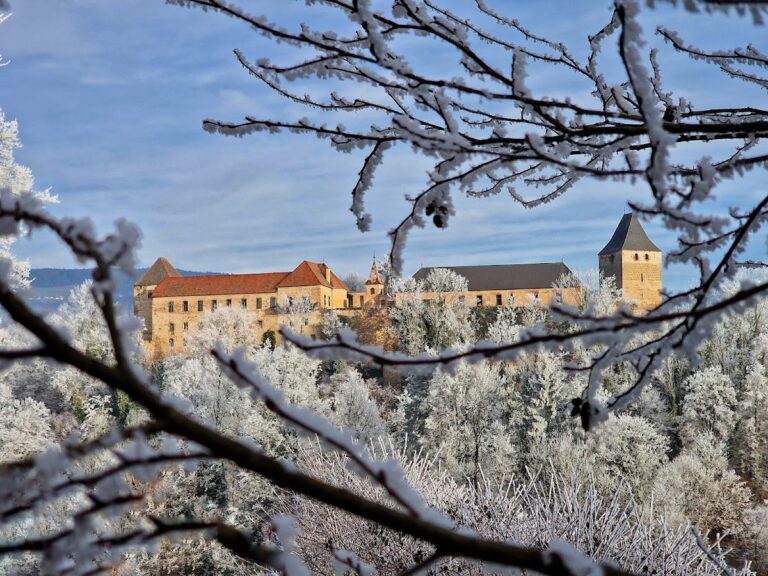Bernstein Castle: A Historic Fortress in Austria’s Burgenland
Visitor Information
Google Rating: 4.4
Popularity: Low
Official Website: www.burgbernstein.at
Country: Austria
Civilization: Medieval European
Site type: Military
Remains: Castle
History
Bernstein Castle stands on a hill in what is now Austria’s Burgenland region, historically part of the Kingdom of Hungary. Its origins trace back to the 12th or 13th century, though the site likely hosted an earlier fortification. This is suggested by the nearby village Grodnau, whose old Slavic name means “the village belonging to the castle,” indicating a longstanding settlement connected to the fortress.
In 860, the surrounding region belonged to the Archbishopric of Salzburg. At that time, a church official named Erimbert granted land near the Pinka River to Jacobus, who founded the village of Rettembach. By 1199, the castle came under Hungarian control. It passed through the hands of several rulers, including King Emeric, Duke Frederick II of Austria, and King Béla IV of Hungary, who captured it in 1236. In 1260, Count Heinrich II of Güssing received the castle as a grant.
Following the defeat of local lords in 1336, King Charles Robert of Anjou incorporated Bernstein Castle into the Hungarian crown lands. Queen Maria of Anjou later granted it to the Kanizsai family in 1388, who began rebuilding the fortress the following year. The castle briefly returned to royal possession under Matthias Corvinus in 1482, but Emperor Frederick III pledged it to Hans von Königsberg in 1487.
Bernstein Castle faced two unsuccessful Ottoman sieges in 1529 and 1532 during the reign of Sultan Suleiman the Magnificent. After these attacks, a ring of bastions was added to strengthen the castle and provide refuge for local residents. In 1604, the fortress withstood a lengthy siege by a combined force of Turks, Hungarians, and Tatars led by István Bocskai, remaining unconquered.
A powder magazine explosion in 1617 caused significant damage. Ludwig Königsberg then ordered the castle’s interior to be rebuilt in the Baroque style, replacing the earlier Gothic elements and removing the keep and towers. In 1644, ownership passed to Count Ádám Batthyány. The castle remained with the Batthyány family until 1864, when Gustav Batthyány sold it to his steward Edward O’Egan, who soon transferred it to Eduard von Almásy. The Almásy family continues to own the castle.
A local legend associates Bernstein Castle with the “White Lady,” a ghost said to have appeared since 1859. This spirit is linked to a tragic love story involving Giovanna de’ Frescobaldi, wife of Lorentz von Ujlak, during Matthias Corvinus’s reign.
Remains
Bernstein Castle is situated 615 meters above sea level, making it the highest castle in Burgenland. Its layout reflects its defensive purpose, especially after the early 16th-century Ottoman sieges. A bastion ring was constructed around the complex to enhance protection and serve as a refuge for the local population.
The castle’s interior underwent significant changes after a 1617 explosion damaged the powder magazine. The original Gothic design was replaced with Baroque elements, including the removal of the keep and towers. Despite these alterations, the knights’ hall from the early 1600s remains intact, featuring an elaborate stucco ceiling.
Among the preserved spaces are a 16th-century alchemists’ kitchen and a torture chamber. Both are maintained as part of the castle’s museum exhibits, illustrating aspects of its historical use. The castle has been adapted for modern functions, including a hotel and restaurant, though access requires prior reservation.
Overall, the castle’s fortifications and internal features demonstrate its role as a stronghold during multiple sieges. The bastions and defensive walls remain visible, preserving the site’s military character.










